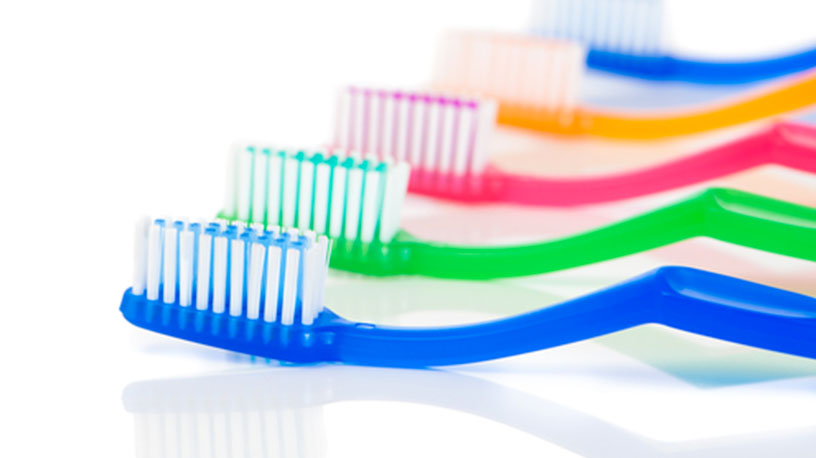When to replace and where to keep your toothbrush

Q: When should I replace and where do I to keep my toothbrush?
Knowing when to replace your toothbrush is vital to good oral health. Hanging onto an old toothbrush may be worse than you think!
Toothbrushes can contain bacteria, viruses and become contaminated with microbial organisms. Some bacteria and viruses from an infected persons mouth can live for weeks on a toothbrush and can continue to cause illness. Since toothbrushes stay wet for long periods of time this allows for the bacteria and viruses make your toothbrush their new home. You should always discard and replace a toothbrush after you are sick or become ill with a virus.
Another sign that your toothbrush needs replacing is worn or frayed bristles. The American Dental Association recommends that a toothbrush be replaced every three to four months, but in the case a toothbrush becomes frayed or worn you should replace it before then. Frayed or worn bristles will not clean your teeth, braces or gums adequately. Not properly cleaning your teeth, braces or gums can cause bad breath, gingivitis, infections, and multiple other complications.
If your toothbrush head is becoming worn or frayed in a few days or even one to two weeks, you may be brushing too hard. While it is important to clean your teeth adequately, over brushing can cause more damage than harm. If you find your toothbrush is wearing out too soon or your gums are receding learn how to properly brush here
You should remember that it is important to also discard and replace electric or power toothbrush heads. An electric toothbrush can have the same amount of germs and bacteria a hand held old-fashioned toothbrush. Most electric toothbrush heads now come with a light line of color at the tip or top of the bristles, when the color is gone this is a sign that you need to replace the toothbrush head.
How to keep your toothbrush clean
Its important to keep your toothbrush clean, since it does not get cleaned by getting wet every time you brush. Three simple steps can help avoid bacteria and germs building up on your toothbrush and ensuring you will have a clean healthy mouth.
The first step to keeping a clean toothbrush is washing it. While running water over it after brushing is a good idea, you may want to consider soaking it in antibacterial mouthwash or even running it through the dishwasher to ensure it is thoroughly clean.
The second step is to try deep cleaning it. There are multiple toothbrush sanitizers available at local drug or grocery stores that can add an extra step to keeping your toothbrush clean.
The last and most important step is to store it properly. Your toothbrush should always be stored upright where it can dry out, not laying down in a cabinet, on the counter or in a drawer. By storing it upright and not in a air deficient area like a drawer, your toothbrush is less vulnerable to foster bacteria.
One of the most important things NOT to do with your toothbrush is to share it. Sharing a toothbrush with family, friends or significant others can cause germs and bacteria to transfer from one mouth to another. Tooth decay is considered an infectious disease and can be spread by sharing toothbrushes. Carrying a travel sized toothbrush and keeping extra at your home can help ensure you or your guests will always have their own toothbrush.
Replacing and having a clean toothbrush is a vital part of your treatment and the health of your teeth!
Albert Ellender, D.D.S.
